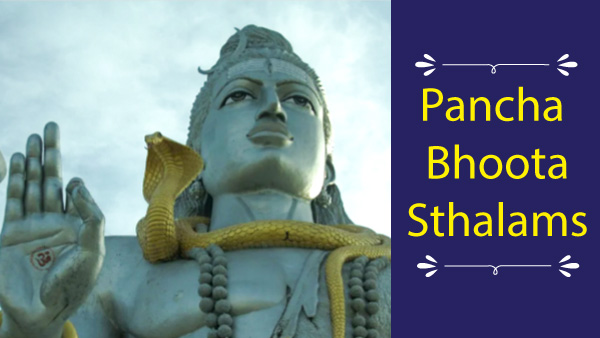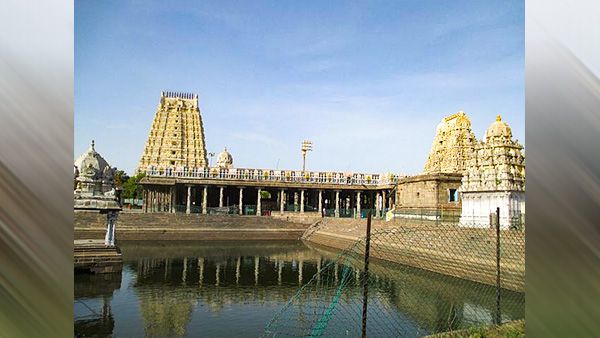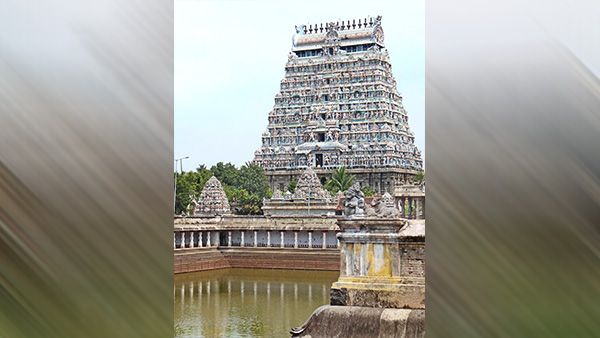Just In
- 1 hr ago

- 2 hrs ago

- 4 hrs ago

- 5 hrs ago

Don't Miss
- Automobiles
 2024 Jeep Wrangler Facelift Video Review: Off-Roading Specialist Gets More Friendly
2024 Jeep Wrangler Facelift Video Review: Off-Roading Specialist Gets More Friendly - Movies
 Chacha Vidhayak Hain Humare 3 OTT Release Date & Platform: 5 Reasons To Watch Zakir Khan’s Show
Chacha Vidhayak Hain Humare 3 OTT Release Date & Platform: 5 Reasons To Watch Zakir Khan’s Show - Education
 UPSC CAPF 2024 registration begins; Apply online for 506 Assistant Commandant posts, Know more
UPSC CAPF 2024 registration begins; Apply online for 506 Assistant Commandant posts, Know more - Technology
 Honeywell Trueno U5100 Review: Quality Audio Meets Comfortable Design at an Oh-So Reasonable Price
Honeywell Trueno U5100 Review: Quality Audio Meets Comfortable Design at an Oh-So Reasonable Price - News
 417 Out Of 1192 Candidates In Phase 2 Of Polls Face Criminal Cases, Most From BJP: ADR Data
417 Out Of 1192 Candidates In Phase 2 Of Polls Face Criminal Cases, Most From BJP: ADR Data - Sports
 103 Not Out: S Ramdas - 103-year-old CSK fan fondly called 'Senior Valiban' - aspires to meet MS Dhoni
103 Not Out: S Ramdas - 103-year-old CSK fan fondly called 'Senior Valiban' - aspires to meet MS Dhoni - Finance
 Rs 44,000 Crore M-Cap Lost, Stock Falls 10%, No More 4th Largest Bank; How RBI's Ban Rocked Kotak
Rs 44,000 Crore M-Cap Lost, Stock Falls 10%, No More 4th Largest Bank; How RBI's Ban Rocked Kotak - Travel
 Escape to Kalimpong, Gangtok, and Darjeeling with IRCTC's Tour Package; Check Itinerary
Escape to Kalimpong, Gangtok, and Darjeeling with IRCTC's Tour Package; Check Itinerary
Pancha Bhoota Sthalams: Temples For Five Primordial Elements
Shiva worship is a pan India spiritual practice and tradition where in mostly Lord Shiva is worshipped in the form of a Lingam. Several temples are built for Lord Shiva, that dedicates to worshipping his different facets.

There is a series of temples that chiefly celebrate Lord Shiva's presence in the Pancha Bhootas or primordial elements. The five elements are earth (prithvi), water (Jala), fire (Agni - Tejus), air (vayu) and space (akasa)..
The term 'Pancha' means 'five' and 'Bhoota' means 'elements'. Sthala is an equivalent for Place. Human life in its various avatars and species is found to have taken birth from a unique combination or blend of these five elements which are actually governed by thridoshas called kaph (phlegm), pitta (bile), Vayu (gas). Scroll down the article to know more about these temples which are dedicated to Lord Shiva.
The temples where Lord Shiva displays to be in his primordial element forms are situated in the heart of Tamil Nadu.
- Ekambareswarar Temple (Earth) - Kanchipuram - 62 km from Chennai
- Arunachaleshwarar Temple (Fire) - Thiruvannaamalai
- Jambukeswarar Temple, Thiruvanaikaval (Water) - Trichy
- Thillai Nataraja Temple (Sky) - Chidambaram
- Kalahasthi Temple (Air) - Kalahasthi near Tirupati

a. Pancha Bhoota Sthalams: Ekambareshwarar Temple
Lord Shiva, residing in the form of Linga made of sand to depict his earth element in the Ekambareshwarar temple, is worshipped by the name of Ekambaranathar and Ekambareshwar. Named after the Sthala Vrukhsham or the mango tree that dates back to 3000 years, Ekambareshwarar means the lord of the mango tree around which there is an associated legend.
Legend: Once up on a time, when Goddess Parvati was seated under a mango tree, engrossed in a deep penance, Lord Shiva became eager to test her immense faith and sent Ganges streams in her direction to disrupt her penance. Goddess Parvati, as soon as the streams gushed around her, prayed to Ganga that her penance should not be disturbed as she was Parvati's sister. Goddess Parvati, immersed in the remembrance of Lord Shiva, set up a Linga under the Mango tree, by using sand grains, and consecrated it. Even today, the abhishekam is performed not with water, but with low density jasmine oil.
5 Facts About The Ekambareshwarar Temple
- Spread over 23 acres of land, this temple is considered to be the tenth largest temple in India.
- The gopurams of this temple is one of the tallest in south India and stands at 190 feet.
- Having existed before 600 AD, the Ekambareshwarar temple is the most ancient temple in India.
- The mango tree inside the temple premises is said to be over 3000 years old.
You can see traces of several Architectural styles of many dynasties, whose kings contributed greatly to its aesthetic aspects.

b. Pancha Bhoota Sthalams: Arunachaleshwarar Temple
Most revered Shiva temple of all, the Arunachaleswarar or the Annamalaiyar Temple stands for the fiery element among the Pancha Bhootas, and is represented by Agni Lingam (Fire Lingam). Lord Shiva here, blesses the worshippers with spiritual knowledge, karma cleansing, and light of positive energy that follows the devotee throughout his life.
Legend:
While playing casually with Lord Shiva, Goddess Parvati, once upon a time, closed Lord Shiva's eyes, which immediately led to a total blackout in the world for scores of years. Penancing for several years, his devotees were able to please him as a result of which Lord Shiva appeared in a column of fire on the Annamalai hill in Thiruvannamalai. In yet another instance, when Lord Vishnu and Lord Brahma vyed with each other for superiority, Lord Shiva appeared there asking them to find the source of his light. Both Lord Brahma and Lord Vishnu failed to find the source. Lord Vishnu accepted his failure, whereas Lord Brahma lied about it as a result of which he was cursed by Lord Shiva that he will no more be worshipped in the temples.
5 Mysterious Facts About Arunachaleshwarar Temple
- Being the largest temple in the world for Lord Shiva, it is, in India, the eighth largest temple which sprawls across 24 acres of land, that is entirely used for religious purposes.
- This dates back to a time that is not yet recorded in the history of mankind. It finds a mention in the Tamil Scriptures, though.
- Every Poornima day, the temple receives thousands of visitors that carry out the Girivalam pradakshina around the Arunachal Hill which actually is around 14 kilometres of walking distance. This pradakshina is known to ward off the karma and relives one from the cycle of birth and death.
- The Rajagopuram, the highest of the four gopurams built one on each side of the temple measures 217 feet in height and stands as the third largest in India.

c. Pancha Bhoota Sthalams: The Jambukeshwarar Temple
The Jambukeshwarar Temple in Trichy represents the water element in Panchabhootas. The Linga installed here, is known as Appu Lingam or ‘Water Lingam' as there is a stream of water that flows underneath the Lingam that engulfs it all the time.
Legend: Hence the presence of the water element is justified. Goddess Parvati, in her Akhilandeshwari incarnation, penanced in the forests of Jambu for long, during which time, she made a Linga out of the flowing streams of water which was then called Appu Lingam. At the next instant, Lord Shiva appeared and imparted her the ultimate spiritual knowledge.
In this temple, since Lord Shiva, and Goddess Parvati, manifested as Guru and Shishya, the divine wedding or the Girija Kalyanam, which is otherwise conducted in other temples, is not followed on Shivaratri. The divine idols are placed opposite to each other, and not adjacent. Since Goddess Parvati worshipped Lord Shiva here, in order to commemorate the event, a priest dresses up in a womanly attire and conducts the puja to Lord Shiva in a manner that reminds the devotees of Goddess Akhilandeshwari's puja to Lord Shiva during bygone times. Wisdom and intellect are granted as boons to those devotees who visit here and worship.
5 Mysterious Facts About The Jambukeshwarar Temple
- Built by Kocenganna Chola, this temple dates back to 1800 years.
- Spread across 18 acres of land, it is touted to be the thirteenth largest temple in India.
- Inscriptions from the Chola times can be found engraved on the walls of the temple.
- The Uchi Kala Pooja is conducted every afternoon. During the pooja, the priests dress up in a saree to perform abhishekam on the appu lingam, which is a very interesting event that draws thousands of pilgrims.
- The stream of water underneath the Lingam is never known to dry up.

d. Pancha Bhoota Sthalams: Thillai Nataraja Temple
The Thillai Nataraja Temple in Chidambaram personifies the sky or ether element. Lord Shiva is worshipped as a formless deity whose town of Chidrambaram has its own story to tell. This place hides a plethora of mysteries in side it. The Chidambara rahasyam or the mysteries of Shiva, are reflected in the architecture of this temple.
Legend: Lord Shiva, when, once up on a time, was roaming about in the thillai vanam (mangrove forests), he found that sages who believed in black magic had made this forest their home. When the wives of Rishis looked visibly enthralled by Lord Shiva's looks, the rishis, enraged, invoked serpents which were picked up and worn as jewels by Lord Shiva on his body. They then created a tiger and then an elephant which were subdued by Lord Shiva. Finally, they invoked Muyalakan, the demon that represents the human arrogance and ignorance. Lord Shiva crushed him under his feet and performed the dance of Ananda Tandava. This is the posture of the deity at the Thillai Nataraja temple.
5 Mysterious Facts About Thillai Nataraja Temple
1.
Being
the
fifth
largest
temple,
Thillai
Nataraja
Temple
spreads
over
40
acres
of
land.
This
temple
is
situated
in
the
heart
of
Chidambaram
town.
2.
The
word
"Chidambaram" is
derived
from
the
word
"Chit
(consciousness)
and
ambaram
(sky).
3.
It
is
the
only
temple
in
this
series
where
in
Lord
Shiva
is
depicted
as
an
idol
but
it
also
worships
Lord
Shiva
as
a
crystal
Linga
and
as
formless
form.
4.
The
Chola
King
Parantaka
had
contributed
a
gold-plated
roof
to
the
gopuram
of
the
temple.
This
temple
is
believed
to
be
located
right
in
the
centre
or
the
heart
of
the
universe.

e. Pancha Bhoota Temples: Kalahastishwarar Temple
Located on the banks of the swirling waters of Swarnamukhi river, the Kalahastheeshwara Temple is known to personify the air element. Vayu lingam, which represents Lord Shiva, is said to receive the worship here.
Legend: Known worldwide as the Southern Kailash, Sri kalahasti derives its title from Sri (spider). Kala (serpent), and hasti (elephant) Lord Shiva was pleased with these creatures.
The lamp that is lit inside the sanctum, does not extinguish despite the presence of the wind. When the entrance to the main deity room, which does not have windows, is shut, the Vayu Lingam is seen to move a bit. White in colour and self-manifested, the Vayu Lingam is the result of the prayers of Vayu God who had prayed to Lord Shiva to be present in all living creatures, in the form of almighty. Lord Shiva appeared as Karpoora linga, which is even today, pristine white in colour, and can be seen as an evidence to the tale.
5 Mysterious Facts About The Kalahastheeshwara Temple
- The Kalahasteeshwara temple, gradually with time got built and rebuilt constantly to arrive at the present form and shape today.
- With the main gopuram measuring at 120 feet, and built in 1516 AD by the Vijaynagar King Krishnadevaraya, it is known to be an architecturally a wonder.
- Gopuram collapsed recently in May 2010 and is under the process of renovation.
- Known for the removal of Rahu and Ketu doshas, and their ill effects occurring due to their inimical position in the birth chart, the deity of this temple responds positively to the puja done by devotees, in order to remove the dosha.
- No one, including the priests, touch the Vayu Lingam with their hands.
Disclaimer: The information is based on assumptions and information available on the internet and the accuracy or reliability is not guaranteed. Boldsky does not confirm any inputs or information related to the article and our only purpose is to deliver information. Boldsky does not believe in or endorse any superstitions.
Image sources: Wikimedia Commons
-
 insyncAnant Ambani- Radhika Merchant Wedding: 14 New Temples Being Built In Gujarat To Mark This Grand Union
insyncAnant Ambani- Radhika Merchant Wedding: 14 New Temples Being Built In Gujarat To Mark This Grand Union -
 insyncAyodhya Ram Mandir:Best Routes, Fare, Transport Options And How To Reach And See The Majestic Lord Rama Temple
insyncAyodhya Ram Mandir:Best Routes, Fare, Transport Options And How To Reach And See The Majestic Lord Rama Temple -
 yoga spiritualityAmid Ongoing Ayodhya Ram Mandir Fete, Explore 8 Extravagant Lord Rama Temples Across India
yoga spiritualityAmid Ongoing Ayodhya Ram Mandir Fete, Explore 8 Extravagant Lord Rama Temples Across India -
 yoga spiritualityAyodhya Ram Mandir: Must Visit These 10 Places In Ayodhya That Hold Immense Spiritual Significance
yoga spiritualityAyodhya Ram Mandir: Must Visit These 10 Places In Ayodhya That Hold Immense Spiritual Significance -
 yoga spiritualityJanmashtami 2023: 10 Temples Dedicated To Lord Krishna That You Must Visit
yoga spiritualityJanmashtami 2023: 10 Temples Dedicated To Lord Krishna That You Must Visit -
 yoga spirituality10 Magnificent Temples In India To Visit During Monsoon
yoga spirituality10 Magnificent Temples In India To Visit During Monsoon -
 yoga spiritualityNava Tirupathi, Vaithamanidhi Perumal Temple (Thirukolur) - Where The Lord Bestows Wealth
yoga spiritualityNava Tirupathi, Vaithamanidhi Perumal Temple (Thirukolur) - Where The Lord Bestows Wealth -
 yoga spiritualityNava Tirupathi, Makara Nedungkuzhaikaathar Perumal Temple (Thenthiruperai): Relief From Curse For Bhudevi
yoga spiritualityNava Tirupathi, Makara Nedungkuzhaikaathar Perumal Temple (Thenthiruperai): Relief From Curse For Bhudevi -
 yoga spiritualityNava Tirupathi, Venkatavaanan Perumal Temple (Perungulam): Where The Lord Bestowed His Grace On A Brahmin Coup
yoga spiritualityNava Tirupathi, Venkatavaanan Perumal Temple (Perungulam): Where The Lord Bestowed His Grace On A Brahmin Coup -
 yoga spiritualityNava Tirupathi, Srinivasa Perumal Temple (Tholaivillimangalam): Where The Lord Bestowed His Grace On A Sage!
yoga spiritualityNava Tirupathi, Srinivasa Perumal Temple (Tholaivillimangalam): Where The Lord Bestowed His Grace On A Sage! -
 astrologyWhich Temple To Visit According To Your Birth Chart
astrologyWhich Temple To Visit According To Your Birth Chart -
 yoga spiritualityNava Tirupathi, Aravindalochanar Temple, (Tholaivillimangalam): In This Temple Lord Vishnu Cured A Leper!
yoga spiritualityNava Tirupathi, Aravindalochanar Temple, (Tholaivillimangalam): In This Temple Lord Vishnu Cured A Leper!


 Click it and Unblock the Notifications
Click it and Unblock the Notifications



